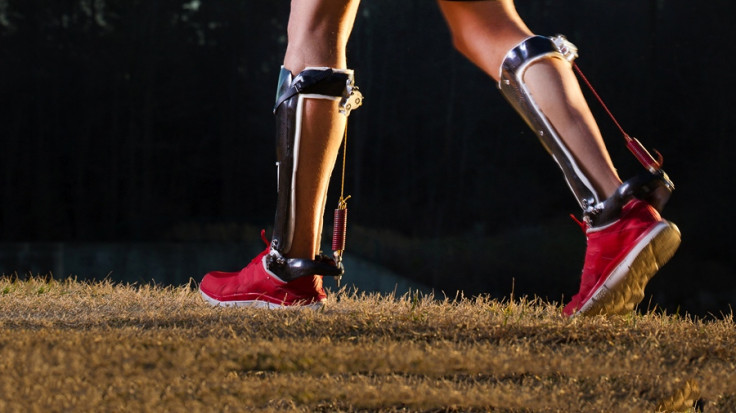Exoskeleton boots 'leapfrog evolution' by making walking more energy efficient

A mechanical exoskeleton boot has been developed that reduces the energy needed to walk by 7% compared to normal footwear.
It is the first device of its kind to not require an external power source, relying instead on a spring-and-ratchet mechanism that parallels human physiology.
The mechanism reduces the energy required from the wearer's calf muscle, instead storing elastic energy in a spring that runs parallel with the Achilles tendon.
"It's the first paper of which I'm aware that demonstrates that a passive system can reduce energy expenditure during walking," said Michael Goldfarb, an exoskeleton engineer at Vanderbilt University.
The new device, detailed on 1 April in the journal Nature, was developed by engineers at Carnegie Mellon University led by Steven Collins.
Since the nineteenth century engineers have been working on methods to improve the efficiency of walking, yet only powered exoskeletons or the mechanical running blades used by amputees have come close to achieving this.
"It's only been in the last couple of years that any machine reduced the energy cost of walking and the first devices to do so were powered exoskeletons," Collins said. "They partly replace the energy used by muscles with an external artificial source.
"What we wanted to see was whether we could reduce energy costs with an unpowered device and the thing that makes that more difficult and interesting is that it's sort of like changing the structure of the body to make it more efficient.
"Those kind of structural changes could have been discovered through evolution. But what we wanted to do was leapfrog evolution in making the structure of the body more efficient."
The exoskeleton device can be used to either improve the walking efficiency on both legs of healthy individuals or for people who have difficulty walking on one leg.
It is still in its prototyping phase but the researchers hope that the idea can be turned into a commercial product that will cost around the same amount as a pair of ski boots.
© Copyright IBTimes 2025. All rights reserved.






















